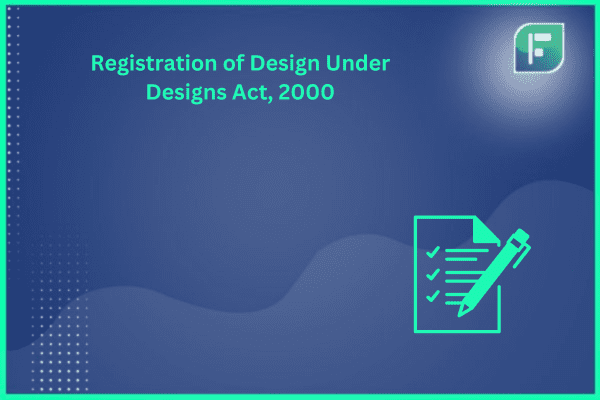A customer is certainly attracted towards the design of a product thus giving a defined judgment of that particular product and in legal terms, the features or the characteristics of a shape, any pattern, arrangement, ornament, configuration, a combination of colors or any framework of lines to any article is known as design. It is the special visual impression that gives the product a distinctive look. Businesses need to take protection against their designs with the help of registration of design under Design Act, 2000. By obtaining this registration you not only protect your design but also make sure that your business will not be copied by any other competitors by using similar kinds of designs in which your business deals.
What do you mean by Design?
Design is well defined under Section 2(d) of the Act stating the shape, pattern, and lines of color which is applied to a product and it also includes the process either done manually or by mechanical means. Design is all about the visual features or elegance of a product. These features confine qualities like the shape, pattern, ornament, configuration, composition of lines or combination of colors applied to any article. The essential element is that a design is a special visual appearance of a product which gives it a distinct look from the rest.
Understanding Design Registration in India
Design Enrollment in India involves several steps that include application filling, examination, publication and registration. After overcoming all the opposition and objections in the examination, finally, the design gets registered and a certificate of registration is issued. Registration of design under Design Act, 2000 is very important for the protection of the visual aspects of the product, encouraging innovation, cultivating creativity in different sectors and protecting the copyrighted property rights of designers.
Who is Eligible to Get Design Registration ?
To register Design in India, the product must fulfill eligibility criteria which includes novel and original product designs, designs which are not already published, must have industrial applicability, exclusions and applicant eligibility must be checked. The design must be an original and new one and should not be opposed to public morality. The design should be a unique and creative one and should not be a mere common design. If you think that your design will fall under the criteria mentioned above you can apply for the registration of design in India.
Documents Required for Design Enrollment in India
Application procedure for registration of design under Section 5 of the Designs Act, 2000 are:
- The General details include the name, contact details and address of the applicant.
- Proper representation and description of the design.
- To also specify the classes and articles to which the design relates.
- To declare the power of attorney and proprietorship.
- To specify the proof of the payment of prescribed application fees.
- And any other supporting documents.
Procedure for Registration of Design in India
Chapter II deals with the procedure for registration of design under the designs laws and involves the following steps:
- Prepare all necessary information and documents
- Description, design details, claimed priorities, article and class must be finalized properly.
- Fill out the application for design registration to the Design Wing of the Controller General of Patents, Designs and Trademarks (CGPDTM) under the Department of Promotion of Industry and Internal Trade (DPIIT).
- Examination by the Design Wing in order to assess compliance with the design laws and Design Regulations, 2001 for novelty, industrial applicability, and non-obviousness.
- Publication in the Official Gazette for public scrutiny.
- Initiation of opposition proceedings if applicable.
- Registration granted if no opposition, with protection initially for ten years.
- Renewal possible for an additional five years upon payment of renewal fees.
Conclusion
A design is a person’s outcome by his hard work showcasing his creativity towards that particular product as it becomes unique but needs to be safeguarded and ensure that the benefit of that particular product is towards the creator of that product. The Designs Act, 2000 ensures the remedy towards the said design which is then protected by the Act which will not allow the design to be copied or abused by other persons rather than the creator. This helps to vest the ultimate right of the design towards its creator and helps derive benefit from the product.
FAQs
- What is a “design” under the Designs Act of 2000?
Design is well defined under Section 2(d) of the Act stating the shape, pattern, and lines of color which is applied to a product and it also includes the process either done manually or by mechanical means.
- What is the application procedure under the Designs Act of 2000?
Application procedure for Design Registration under Section 5 of the Designs Act, 2000 requires the General details including the name, contact details and address of the applicant, Proper representation and description of the design, To also specify the classes and articles to which the design relates, payment of fees and any other supporting documents.
- What is the period for registration of design in India?
The process of registration takes a lot of time as it can take about 6 months to two years or more depending on various factors like opposition or preparation of documents.
- Who is eligible to register for design in India?
The product should be Novel and original, must not be already published, should be industrial applicability, exclusions and applicant eligibility, the design must be an original and new one, should not be opposed to public morality, the design should be a unique and creative one, should not be a mere common design.
- What do you understand by design in general terms?
Design is all about the visual features or elegance of a product. These features confine qualities like the shape, pattern, ornament, configuration, composition of lines or combination of colors applied to any article.





